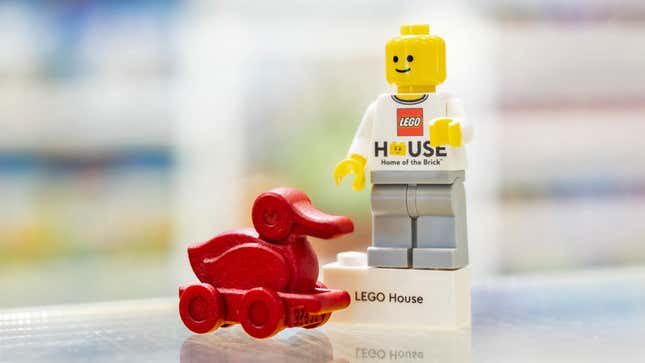
On average, Lego produces about 20 billion plastic bricks and building elements every year, and most come from injection molding machines that are so precise that just 18 of every million parts produced are rejected. It’s the secret to Lego’s enduring appeal and quality standards, but the approach also has its limits, which is why the company is starting to experiment with other manufacturing techniques.
How an injection molding machine works is all in its name. Plastic granules are melted and heated to 230 degrees Celsius and injected at high pressure into metal molds that have been painstakingly created to be accurate to within 0.005-millimeters of the design. Once cooled, the plastic pieces are ejected, and ready to be packaged into sets.
The process is fast, taking just 10 seconds to create a new Lego element, which allows Lego to churn them out by the millions. But creating those highly-accurate molds is a very expensive and time-consuming process, and before commissioning a new minifig or type of piece, Lego needs to know it will sell enough sets to justify the costs of developing the mold for it. It’s why new Lego building elements are few and far between and often a big deal, but it doesn’t necessarily have to be that way.
Lego has already been experimenting with 3D printing as a complementary manufacturing approach for parts with smaller production runs and cheaper up-front costs. The company’s first 3D-printed element was created back in 2019, but only distributed in a very limited special edition set given to those taking the annual LEGO Inside Tour.
This month, Lego is making its second 3D-printed element available to those who visit the Lego House in Denmark and participate in the Minifigure Factory experience, where visitors get to design their own Lego figure. Included with the figure is a small plastic red duck that’s actually a replica of a wooden toy duck created by Lego’s founder, Ole Kirk Kristiansen. According to Brickset, the duck is manufactured using the selective laser sintering process where lasers are used to heat and melt a powdered material, layer by layer, until a 3D model is built up. This approach allows the duck to be made with functional mechanical elements inside, and as it’s rolled along, its beak opens and closes.
Availability of the 3D printed element will be limited, and visitors wanting to purchase the unique souvenir will need to sign up in advance for the chance to spend 89 DKK—or about US $12—on one. On top of that, those who purchase the duck will be asked to complete a survey that asks questions about their experience with it, and how it compares to Lego elements manufactured using more traditional techniques. Ultimately, the company hopes that 3D printing will provide it the flexibility to create an even larger variety of unique building elements (it offers over 3,700 different elements across the sets currently available), but in smaller numbers, while maintaining the same level of quality offered by injection molding.